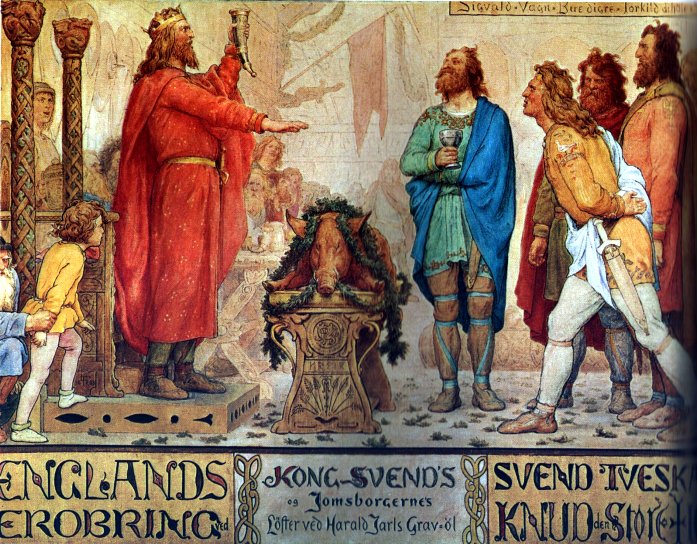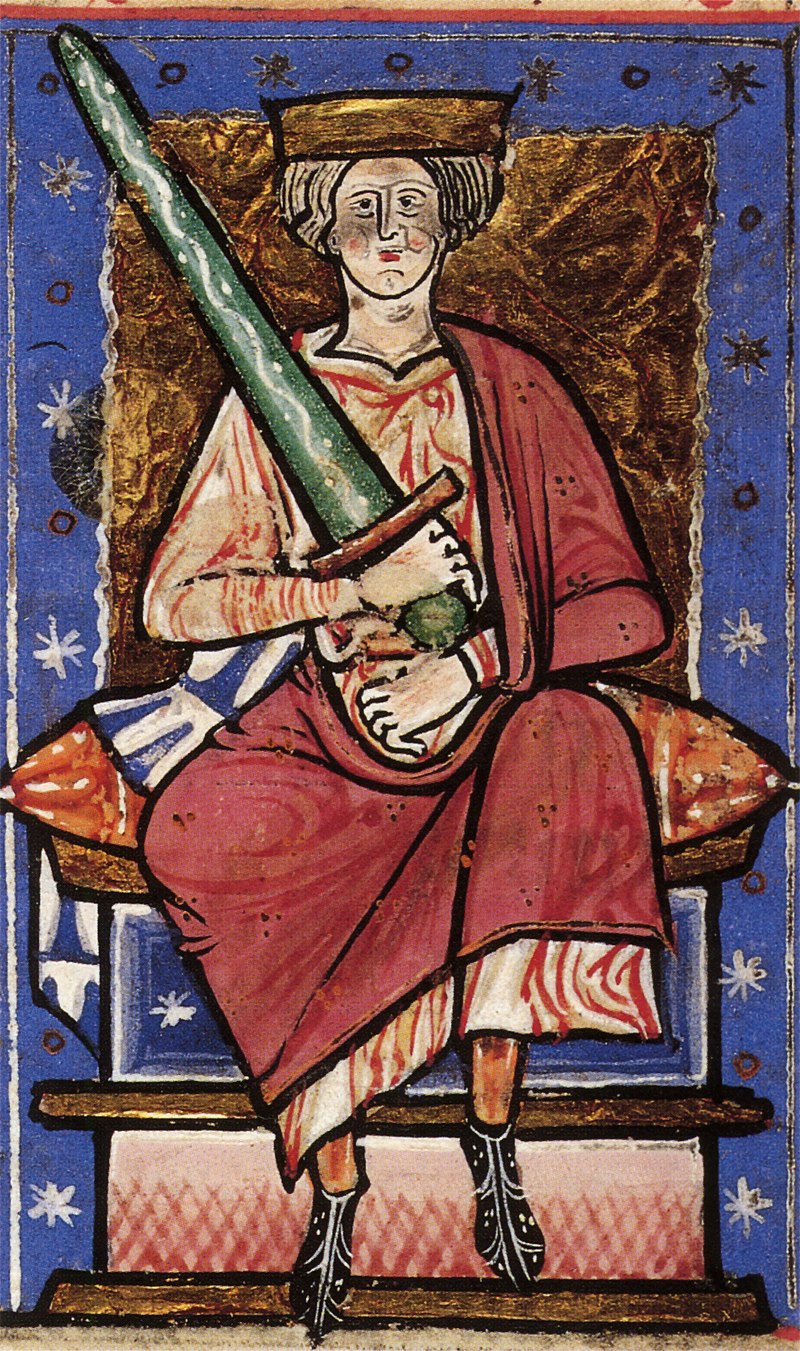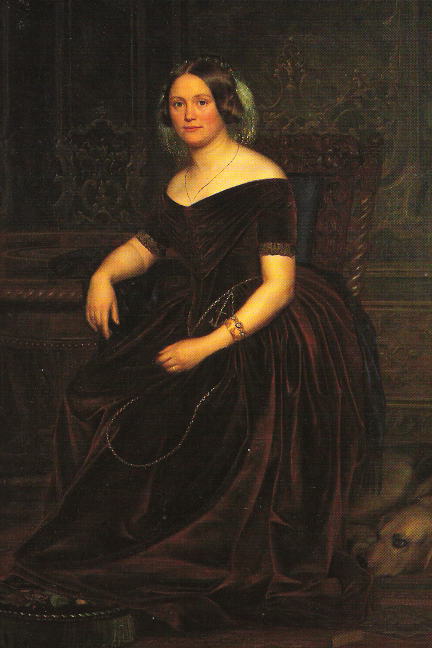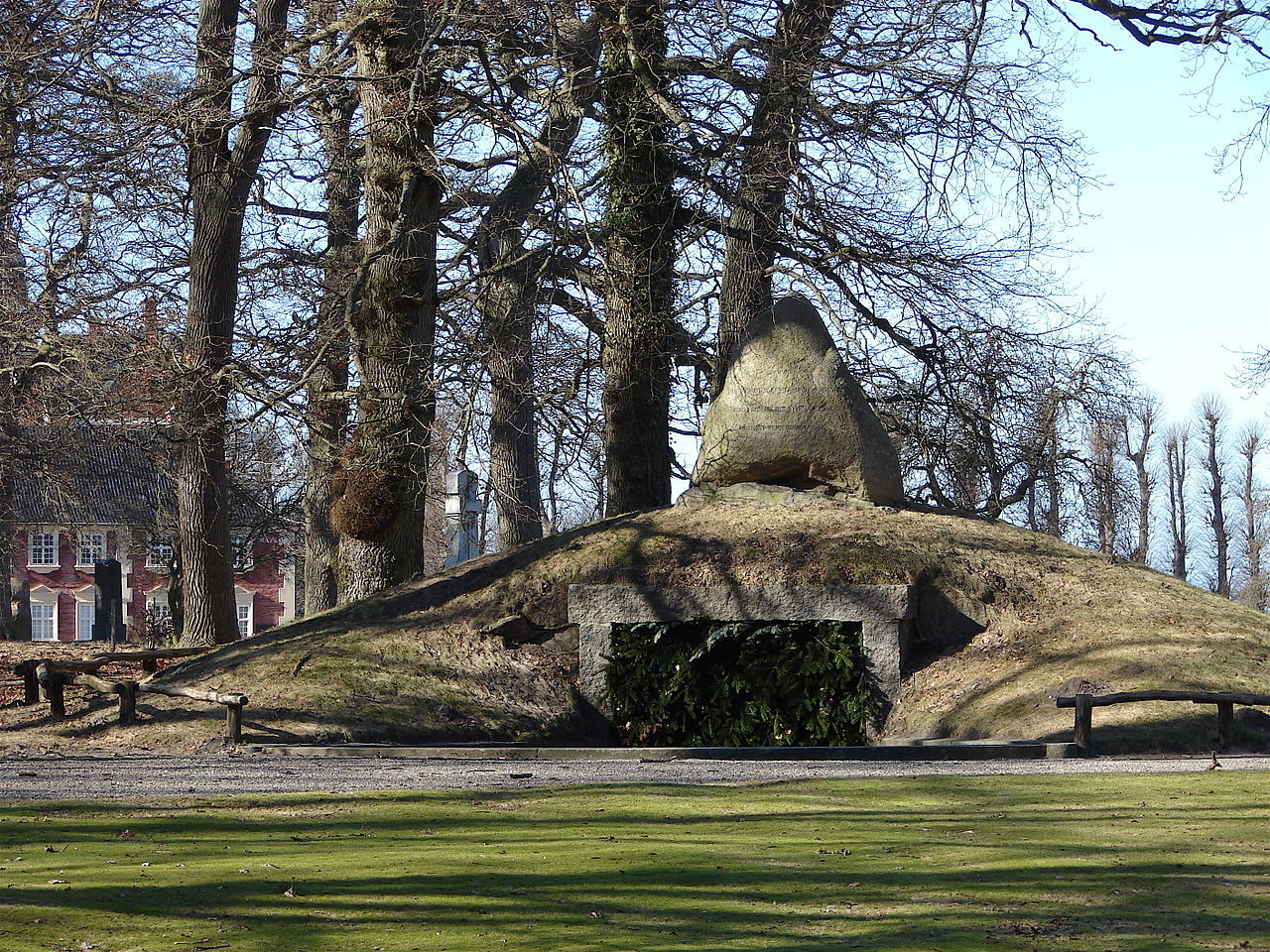by Susan Flantzer © Unofficial Royalty 2019
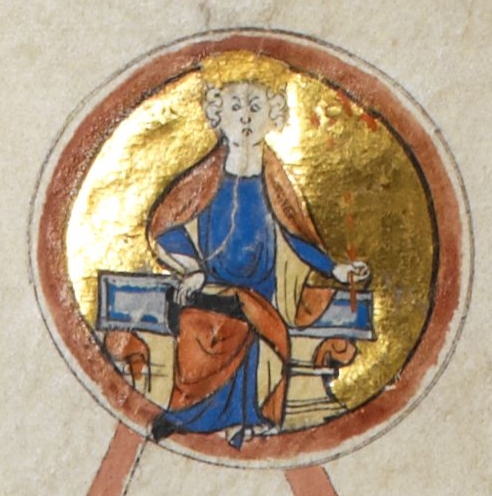
Cnut the Great, King of England, Denmark, and Norway; Credit – Wikipedia
One of only two British monarchs to be given the epithet “the Great” (the other was Alfred the Great), Cnut was King of England, Denmark, and Norway, and his dominions were called the North Sea Empire. He was born circa 995 in Denmark, the elder son of Sweyn Forkbeard, then King of Denmark and Norway, later also King of England. Sweyn Forkbeard had two wives: Sigrid Storråda (the Haughty) and Gunhilda of Wenden. Both women are mentioned in the Norse sagas but there is very little information about them in the medieval chronicles. Sweyn Forkbeard had seven known children but which of the two women are their mothers is uncertain. Gunhilda of Wenden was probably the mother of Cnut and his brother Harald.
Cnut had six known siblings:
- Harald II, King of Denmark (died 1018), unmarried (?), childless
- Estrid Svendsdatter (990/997 – 1057/1073), married Ulf, Jarl of Orkney, had two sons including Sweyn II, King of Denmark
- Gytha
- Gunnhild
- Santslaue, a nun in England
- Thyra
Nothing is known about Cnut until 1013 when he was part of an army under his father Sweyn Forkbeard in his invasion of England. This was a culmination of Sweyn Forkbeard’s raids in England since 1003. According to The Anglo-Saxon Chronicle, in 1002 Æthelred II, King of the English was told that the Danish men in England “would faithlessly take his life, and then all his councilors, and possess his kingdom afterward.” In response, Æthelred “ordered slain all the Danish men who were in England.” St. Brice’s Day Massacre occurred on November 13, 1002. There was a significant loss of life including Gunhilde, the sister of Sweyn Forkbeard. In retaliation, Sweyn attacked England during 1003 – 1004 but famine in 1005 caused him to retreat. The Danish invaders returned and within a few years, all of England came under Danish rule. On Christmas Day in 1013, Sweyn was formally proclaimed King of England. Æthelred II had fled to the Isle of Wight and then to Normandy.
However, Sweyn Forkbeard’s reign was short-lived as he suddenly died on February 3, 1014. Sweyn’s younger son succeeded him as Harald II, King of Denmark, and his elder son Cnut, was proclaimed King of England by the Danes in England. However, English noblemen sent a deputation to Æthelred II to negotiate his restoration to the throne. Æthelred returned from exile in Normandy in the spring of 1014, managed to drive Cnut out of England, and reigned until his death on April 23, 1016.

Medieval illumination depicting Kings Edmund Ironside (left) and Cnut (right), from the Chronica Majora written and illustrated by Matthew Paris; Credit – Wikipedia
Æthelred II’s son Edmund Ironside became King of the English but had to fight Cnut to keep the Kingdom of England. He earned the added name “Ironside” because of his bravery in resisting the Danish invasion led by Cnut the Great. The war between Edmund and Cnut ended in a decisive victory for Cnut at the Battle of Assandun on October 18, 1016. Because Edmund’s reputation as a warrior was great, Cnut agreed to divide England, with Edmund taking Wessex and Cnut the rest of the country beyond the River Thames. However, Edmund died on November 30, 1016, and Cnut the Great became King of England. Cnut succeeded his brother Harald II as King of Denmark in 1019. In 1029, Cnut invaded Norway and when King Olaf II of Norway was killed in 1030 at the Battle of Stiklestad, Cnut became King of Norway. He eventually also ruled parts of Sweden, Pomerania, and Schleswig.

Cnut’s North Sea Empire: Red = Countries where Cnut was king, Orange = Countries where rulers submitted to Cnut, Yellow = Countries who were allies of Cnut; Credit – By Soerfm – Own work, CC BY-SA 4.0, https://commons.wikimedia.org/w/index.php?curid=65042103
Cnut’s first wife was Ælfgifu of Northampton, daughter of Ælfhelm, Ealdorman of Northumbria. In 1006, her father and brothers were suspected of consorting with the Danes in northern England. Her father was murdered and her brothers were blinded, probably at the command of Æthelred II. When Sweyn Forkbeard invaded England, the people of the north, many of them of Scandinavian descent, immediately submitted to him. He then married his son Cnut to Ælfgifu to seal their loyalty.
After Cnut’s conquest of England in 1016, he married Emma of Normandy, the widow of King Æthelred II. At that time, it was acceptable to put aside one wife and take another wife. Exactly how Cnut’s second marriage affected Ælfgifu’s status is unknown but there is no evidence to suggest that she was repudiated. In fact, in 1030, after the defeat and death of King Olaf II of Norway by forces loyal to Cnut, Cnut sent Ælfgifu with their eldest son Sweyn to govern Norway. The Norwegians considered their rule oppressive and they were expelled in 1035. Magnus the Good, a son of Olaf II, then became King of Norway. There are no records of Ælfgifu after 1036 but it is unknown when she died.
Cnut and Ælfgifu had two sons:
- Sweyn Cnutsson (circa 1016–1035), unmarried
- Harold Harefoot, King of England (circa 1016 – 1040), married (?) Ælfgifu, possibly had a son Ælfwine who became a monk

Cnut’s second wife, Emma of Normandy, with her two sons by Æthelred II; Credit – Wikipedia
In 1017, Cnut thought it would be expedient to marry Æthelred II’s widow and sent for Emma of Normandy, a daughter of Richard I, Duke of Normandy. It is unclear whether Emma married Cnut by force or if she chose to accept Cnut’s proposal but she returned to England from Normandy and married Cnut.
Emma and Cnut had two children:
- Harthacnut, King of Denmark and England (circa 1018 – 1042), unmarried
- Gunhilda of Denmark (circa 1020 – 1038), married Heinrich III, Holy Roman Emperor, had one daughter
Emma’s children by Æthelred II remained in exile in Normandy:
- Saint Edward the Confessor, King of England (circa 1003 – 1066), married Edith of Wessex, no children
- Goda of England (1004 – circa 1047), married (1) Drogo of Mantes, Count of the Véxin, had three children (2) Eustace II, Count of Boulogne, no children
- Alfred Ætheling (circa 1005 – 1036), unmarried
Emma and Cnut’s marriage began as a loveless, political strategy but Emma’s importance in the kingdom’s affairs grew. Chroniclers often mentioned that Emma was alongside her husband as if they were inseparable. After Cnut became King of Denmark in 1019 and King of Norway in 1028, it was often necessary for him to be absent from England. Emma assumed a form of regency during those periods with the main nobles of the kingdom and the Archbishops of Canterbury and York.
Cnut the Great died on November 12, 1035, when he was about 40 years old. A 2015 study speculated that perhaps up to fourteen Danish kings, including Cnut, who suddenly died at a relatively young age without being ill, possibly died of Brugada Syndrome, a genetic disorder in which the electrical activity in the heart is abnormal. It increases the risk of abnormal heart rhythms and sudden cardiac death.
Copenhagen Post: Mystery of Danish king deaths fosters new theory
Cnut was buried at the Old Minster in Winchester. When the Old Minster was demolished in 1093, Cnut’s remains were moved to Winchester Cathedral. His remains are in the mortuary chests that rest on top of the choir screen. Cnut was succeeded in England by Harold Harefoot, his son from his first marriage to Ælfgifu of Northampton, and in Denmark by Harthacnut, his son from his second marriage to Emma of Normandy.

Mortuary chest from Winchester Cathedral that claims to contain the remains of Cnut and his second wife Emma; Credit – Wikipedia
This article is the intellectual property of Unofficial Royalty and is NOT TO BE COPIED, EDITED, OR POSTED IN ANY FORM ON ANOTHER WEBSITE under any circumstances. It is permissible to use a link that directs to Unofficial Royalty.
England: House of Denmark Resources at Unofficial Royalty
- United Kingdom of Great Britain and Northern Ireland Index
- House of Denmark Index
- Coronations before the Norman Conquest (871 – 1066)
Works Cited
- Ashley, M. (1998). The Mammoth Book of British Kings & Queens. New York: Carroll & Graf Pub.
- Cannon, J. and Griffiths, R. (1988). The Oxford Illustrated History of the British Monarchy. Oxford: Oxford University Press.
- Da.wikipedia.org. (2019). Knud den Store. [online] Available at: https://da.wikipedia.org/wiki/Knud_den_Store [Accessed 28 Feb. 2019].
- Dodson, A. (2004). The Royal Tombs of Great Britain. London: Duckworth.
- En.wikipedia.org. (2019). Cnut the Great. [online] Available at: https://en.wikipedia.org/wiki/Cnut_the_Great [Accessed 28 Feb. 2019].
- Flantzer, S. (2019). Emma of Normandy, Queen of England, Denmark, and Norway. [online] Unofficial Royalty. Available at: https://www.unofficialroyalty.com/emma-of-normandy-queen-of-england-denmark-and-norway/ [Accessed 28 Feb. 2019].
- Flantzer, S. (2019). Sweyn Forkbeard, King of Denmark, Norway, and England. [online] Unofficial Royalty. Available at: https://www.unofficialroyalty.com/sweyn-forkbeard-king-of-denmark-king-of-norway-king-of-england/ [Accessed 28 Feb. 2019].
- Williamson, D. (1998). Brewer’s British Royalty. London: Cassell.


 (
(
